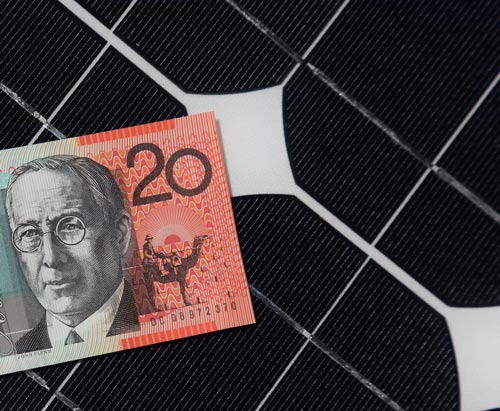
The cost of solar panels can vary considerably depending on a number of different factors. In Australia, solar panels cost varying amounts from one state to another. The three important factors that control the cost are the brand, the level of service and the quality of the parts and installation.
In general, residential solar panels cost a bit more than those used in industrial installations. Most residential installations are in the range of 1.5kW up to 5kW, while typical commercial solar installations start from 10kW and could be up to as much as 100kW. Manufacturers of residential solar panels often put more thought into aesthetics, which can also increase the average cost of solar panels.
Solar panel prices at the time of purchase is not the only factor to consider when determining the cost. You also need to think about things like the cost to install solar panels. A simple solar panel cost calculator takes the following factors into account:
- Type of panel
- Number of panels required
- Cost of installation
- Eligibility for rebates and incentives
Overall, the most important factor when it comes to researching solar panels for sale and solar installation costs is the type of panel you use. Luckily, you can find immediate and free information using our solar panel cost calculator as well as referring to our solar panel guide below:
Monocrystalline Solar Panels
Monocrystalline solar panels cost more than other types, because they are high quality panels with each cell composed from a single wafer of a solid silicone crystal. Because of this, monocrystalline solar panels are very reliable and have a long lifespan. They are also more efficient than other types.
Polycrystalline Solar Panels
Polycrystalline panels are made by pressing individual offcuts of monocrystalline silicone together into a block and then cutting new wafers from the pressed block. The cost can be slightly lower, as will be the quality, but the difference is not hugely noticeable except in the case of ultra-high performance monocrystalline panels.
Thin Film Solar Panels
These panels are made by spraying a thin film of silicone and other chemical additives onto the panel surface. Because the panels can be smaller and thinner than crystalline panels, it allows innovative design methods, for example the panels can be made to look almost identical to standard roof shingles. Naturally they can be expected to wear out more quickly than crystalline panels, but the cost to buy them should be significantly lower. On the other hand, you need a lot more of them to generate the same output.
Don’t forget about temperature!
An often overlooked factor is that crystalline panels are best suited to cooler environments, and they quickly drop in efficiency as temperature increases. Thin film panels are not affected by temperature and may actually, when considering what solar panels cost in Australia, be a more cost-effective choice in areas prone to long hot summers.